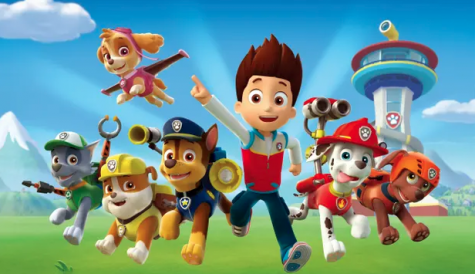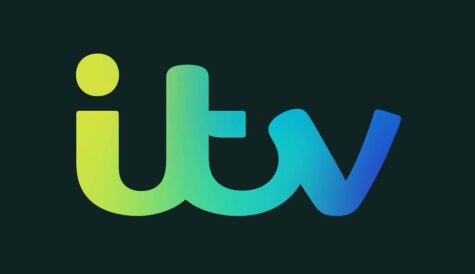Interview: Paul Kanaerck ITV
Ahead of TV Connect, Stuart Thomson talks to ITV’s Paul Kanaerck about the UK commercial broadcaster’s digital strategy.
For free-to-air broadcasters, the future is full of uncertainty. With the likes of Netflix’s Reed Hastings predicting the death of broadcast TV, and a growing perception that the shift of viewing among Millennials towards short-form YouTube-type content, devoured in snackable form on multiple screens, could be more than a short-term blip in behaviour, channel providers are looking to diversify and invest in digital platforms that can serve audiences demanding more flexibility.
The merits of investing in digital services such as online VoD platforms, social TV and multiscreen distribution include, first and foremost the ability to generate viewer loyalty. They could also, potentially, generate additional revenue.
The risk facing broadcasters, on the other hand, is that they could be investing in platforms that encourage viewers to turn away from linear TV, where they continue to make the vast bulk of their revenues from traditional advertising.
Paul Kanaerck, director of online and brands at UK commercial broadcaster ITV, will address many of these issues at TV Connect, when he addresses the topic of Building a Seamless and Fast Viewing Experience for the Digital Native.
For Kanaerck, however, the death of linear TV has however been much exaggerated and Millennials’ changing viewing habits have to be viewed in context.
“A company like ITV has to be very focused on our USP, and live TV remains very prevalent,” says Kanaerck. “TV is still at the heart of what we do. Young people have always watched less TV, although the change in habits now possibly is more acute because what they are spending their time doing is consuming other forms of media, especially other forms of video content.”
While the pace of change could accelerate, Kanaerck says that the commercial impact of this could be less severe than expected. “Commercially, money doesn’t always follow eyeballs. If you are trying to reach a lot of young people simultaneously, buying an ad around The X Factor is still the most cost-effective way to do it,” he says, pointing out that digital brands are among those most eager to buy linear airtime. He says one lesson he has learned from time spent in the US is that “a lot of money going into online video is cannibalising other forms of advertising rather than TV – it is a lot more about digital video superseding display advertising.”
Kanaerck is moderately sceptical about the potential of targeted advertising, pointing out that ITV’s commercial model remains based on its “mass reach” and the “gold-plated” measurement data provided by ratings agency BARB. The online promise of hyper-targeting needs to be seen in the context of “an online world where there is a lot of fraud” around viewing figures, he says.
He is more enthusiastic about the burgeoning relationship between social networks and broadcast TV. “What we have seen is that TV really drives social. People want to talk about the same things, and as social becomes more video-oriented we are well positioned to go with it,” he says. “More and more people are using social networks to talk about video and this also offers advertisers an opportunity to amplify their audience reach.” ITV, he says, has reached out proactively to YouTube’s user base, citing the example of collaborations with YouTube personalities Alfie Deyes and Marcus Butler.
But TV is still at the core of things for Kanaerck. For now, the majority of viewing is still accounted for by linear TV and the majority of non-linear viewing is ‘near-linear’ viewing of content in the first one or two days after it is broadcast. For these reasons, he says that ITV Hub, the broadcaster’s recently revamped online TV platform, offers a completely different proposition from OTT services such as Netflix: “We drew a distinction between what we offer and SVoD. Netflix is a retail browsing environment – spending 15 minutes working out what to watch is part of the experience. That is not TV, which is fresh and instantaneous.”
This insight led the broadcaster to make live TV available as part of the ITV Hub experience and about 30% of use of the platform on tablets is using this feature, according to Kanaerck. “What we did with the Hub was try to recreate the TV experience as much as possible – the viewer is immediately presented with live TV and when you swipe on the app you swipe from channel to channel and the live TV stream automatically plays,” he says. ITV’s experience of simulcasting coverage of the Rugby World Cup online showed that it is now technically “getting close to offering a near-TV experience” on the web, with limited buffering and technical problems, despite the spike in usage.
Kanaerck declined to comment on recent reports about plans for a possible SVoD joint venture between ITV, the BBC and NBCUniversal, but he concedes that “broadcasters sometimes work better together”, citing the example of Freeview Play, the UK free-to-air on-demand platform recently launched to complement the linear digital-terrestrial service.
In terms of making money from online, Kanaerck says that ITV has focused on making the bulk of content available on its linear channel rather than developing exclusive content for online, although it has provided a ‘freemium’ offering that provides an ad-free viewing experience to those willing to pay a small subscription. Kanaerck said that the service, ITV Hub+, could be extended in the coming years with better functionality and a more compelling user experience.




